#Nomad Factory 80s Spaces
Text
Nomad Factory Plugin Deals - Huge Savings on range of effects
Grab these Nomad Factory plugins for your DAW and add some vintage EQ, effects, and more to your recording chain. These current deals, on the Nomad Factory are all available now to download straight away.
Nomad Factory Deals
If you need to add some new plugins to your DAW setup, then these Nomad Factory deals will save you a lot of money. Below are the direct links to all the Nomad Factory deals…

View On WordPress
#AAX#Ableton#Apple Silicon#AU#Cubase#DAW#Deals#direct download#Logic#MAc#Nomad Factory#Nomad Factory 80s Spaces#Nomad Factory All-Tec EQs#Nomad Factory Analog Studio Rack#Nomad Factory Blue Tubes Analog TrackBox#Nomad Factory Blue Tubes Bundle V3#Nomad Factory BlueVerb DRV-2080#Nomad Factory British Bundle#Nomad Factory Bus Driver#Nomad Factory Cosmos#Nomad Factory Drum Tools#Nomad Factory Echoes#Nomad Factory Garbage LSD#Nomad Factory Integral Studio Pack III#Nomad Factory Plugin Deals#Nomad Factory Pulse-Tec EQs#Nomad Factory Retro EQs Bundle#PC#plugin#Plugins
0 notes
Text
Nomad Factory 80's Spaces v1.1.0 / v1.0.2 [WiN, MacOSX] (Premium)
Nomad Factory 80’s Spaces v1.1.0 / v1.0.2 [WiN, MacOSX] (Premium)
Nomad Factory 80’s Spaces v1.1.0 / v1.0.2 [WiN, MacOSX] free Download Latest. It is of Nomad Factory 80’s Spaces v1.1.0 / v1.0.2 [WiN, MacOSX] free download.
Nomad Factory 80’s Spaces v1.1.0 / v1.0.2 [WiN, MacOSX] Overview
Nomad Factory in associatoin with MoReVoX and Pluqivery Distributoin today proudly announce the release of heir latest pluq-in, 80’s Spaces. It is a uniguely desiqned pluq-in…
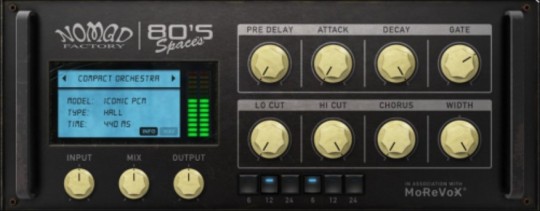
View On WordPress
0 notes
Text
Spanish Cities 3.3.5
Barcelona 3.3.5 -- Amazing Poblenou
After arriving in Barcelona, I stayed first in the Eixample at the hostel for digital nomads, not far from Sagrada Familia. Then I left to go to Granada for several days, and then Madrid, before returning to Barcelona. During this second visit I had the good fortune to find a cool place in the neighborhood called Poblenou (new town). Formerly an industrial area, it's now a wild mix of old and new residences, warehouses for artists, and actually for storing wares (!), arty new shops and restaurants, AND it's near the beaches of Nova Icária and Bogatell. IMO PERFECT.
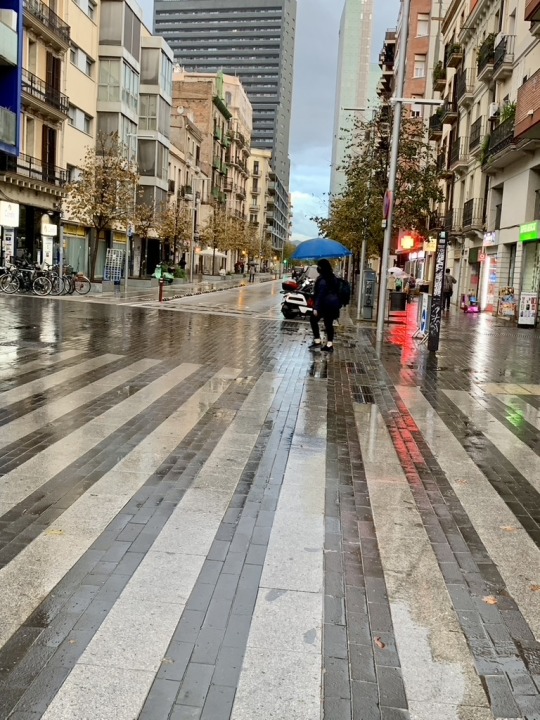
Here's a view from the main commercial street, La Rambla del Poblenou, down the Carrer del Pere IV. On the Rambla cars must use a slow single lane on either side of a wide pedestrian walkway inn the center with benches and vendors and art. It's a really pleasant walk, and unlike the famous Ramblas in the Old City, this one has almost no tourists.

This is a view of the corner of Carrer Pere IV and the Rambla del Poblenou. Note the extra-wide pedestrian crossing lines.

All through Poblenou you find these beautiful old residences which were once tucked between factories, but now are preserved. This is the intersection of the Carrer de Roc Boronat and Carrer dels Almogavers. It's also inside one of the first Superillas (superblocks) which is Barcelona's new plan to improve traffic flow and create more space for people to walk or play or sell stuff of do whatever inn the safety of reduced vehicle speed and numbers. Through traffic is diverted to the edges of the nine-block superblock. Inside the superilla only cars with local destinations are permitted, and they must obey reduced speed limits.

Here's another beautiful old residence in the same superilla, on the corner of the Carrer de Badajoz and the Carrer de Pere IV. More info on superillas? https://ajuntament.barcelona.cat/superilles/en

This is corner of the Carrer de Pamplona and the Carrer de Pere IV. The wild mix of old and new is what makes walking though Poblenou especially fascinating. Nearby is the Placa de les Glories Catalans, the intersection of three of central Barcelona's largest boulevards. It's also the center of 22@ Barcelona, (vint-i-dos arrova) which is a project to create a technological and innovation district in Poblenou, as well as to increase leisure and residential spaces. It's one of Europe's biggest urban regeneration schemes. More info: https://en.wikipedia.org/wiki/22@

This is what Poblenou used to look like before the renovation of the later 1970's and 80's and especially the Summer Olympics of 1992. Hosted by Barcelona, most of the venues were in and around Poblenou. Of course, the artists and craftspeople moved in first to the not-yet-fashionable, and still-without-services neighborhood, willing to put up with inconveniences in order to have space and low rent. Today the rents are skyrocketing, and artists will have to look elsewhere. Does this sound familiar?

Off the Carrer de Roc Boronat, this is a walkway in the first Poblenou superilla, also in the 22@ project area.

More in the same block -- lots of very strange architecture around that part of Poblenou. Barcelona in general is very bold when it comes to architecture. They have loved innovation since the modernista period around 1880 - 1930. But Poblenou in particular has a lot of really unusual buildings with strange surfaces and spaces.
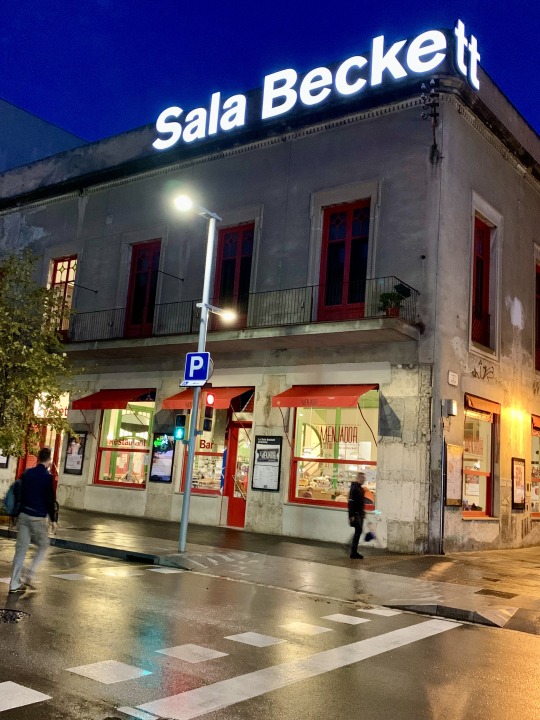
Well, the Sala Beckett certainly caught my eye. The theater company I've been fortunate enough to be a part of since 2006 (PUS or Performers Under Stress) specializes in the work of Samual Beckett. This lovely old building contains a cafe, small theater and rehearsal spaces. In other words, it's what art spaces can look like when supported by a civilized government.

This is at the opposite corner of Poblenou, near the Avinguda Diagonal, almost to the Forum. I have no idea what that tower is for. It looks like it was preserved from some old industrial use, and left as a sculpture to adorn this new apartment building.
0 notes
Text
Kjaerhus For Mac

Nomad Factory Blueverb DRV2080 • Kjaerhus Audio MPL1 Pro • Voxengo Marquis • Chandler EMI TG12413
Kjaerhus For Macbook Air
Kjaerhus For Mac Os
Kjaerhus Mac
Kjaerhus For Macbook
Kjaerhus For Macbook Pro
Nomad Factory Blueverb DRV2080
Add a touch of vintage flair to your tracks with a plug-in that's part time machine. IZotope's Vinyl uses advanced filtering, modeling and resampling to create an authentic 'vinyl' simulation, as if the audio was a record being played on a. Classic Reverb is a nice and smooth reverb that does a good job on almost any instrument: - Smooth stereo reverb effect - Ajustable roomsize and damping - Low cut filter - Host Synchronization - Presets. Download the Best Free Audio Plugins. Synths, Reverbs, Compressors.and much more. Just click and download.
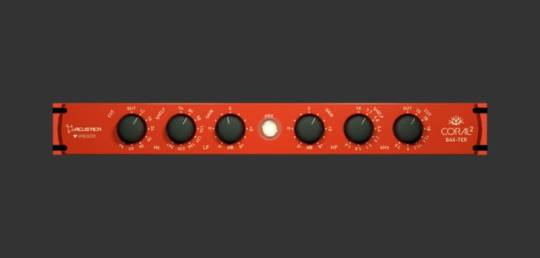

Formats: PC VST & RTAS, Mac VST, RTAS & AU
Mac users often leave their computers running 24/7, putting them to sleep after use rather than fully shutting them down. Pc games of 2012.
The world got very excited about convolution reverbs for a couple of years, but it seems that more traditional algorithmic designs are making a comeback. After all, convolution processors are still pretty CPU-hungry, so in situations where you want three or four reverbs in a mix, they can be impractical. Moreover, they don't tend to offer as much flexibility as their older brethren, and although they provide unsurpassed realism, it turns out that real doesn't always mean better, at least in your average pop mix.
The Industry's Best Workflow. Created by musicians, for musicians, Mixcraft is unrivaled in the industry for its ease-of-use and raw power. Record and mix your tracks to perfection, in record time, with Mixcraft's incredibly intuitive interface, lightning-fast sound engine, reality-defying pitch-shifting and time-stretching technology, and nearly-universal support for third-party plug-ins.
Kjaerhus For Macbook Air
The latest entry in the retro reverb stakes comes from Nomad Factory, whose Blueverb DRV2080 is allegedly 'intended to recreate the warm qualities of vintage-style digital reverbs from the '80s'. And this is pretty much exactly what it does. It's not the sort of plug-in that offers endless potential for tinkering; instead, it provides just a few basic controls, enabling you to get a sound fast, without crippling your PC in the process. Control over the reverb itself is limited to seven familiar parameters, all of which do pretty much what you'd expect, and the output can be shaped by a simple two-band EQ.
It's the sound that counts, and to my ears, DRV2080 does a decent job. Although there appears to be only one reverb algorithm, it's flexible enough to deliver smooth long halls and some fairly recognisable plates, as well as more subtle ambiences. None of them is exactly convincing as an emulation of a real acoustic space, but they can work very well on vocals and other sources within a mix. I particularly liked the plate presets, though I found that their usefulness on vocals was limited by a strong tendency to exaggerate sibilants, which the basic two-band EQ didn't really help with. Overall, however, this is a surprisingly versatile plug-in with a likeable, rich sound that's a lot more dense than that of many algorithmic reverbs. CPU load is minimal, and if you're looking for something that will provide an affordable step up from the reverbs bundled with DAWs like Cubase or Pro Tools, this is well worth considering. Sam Inglis
£99 including VAT.
Time & Space Distribution +44 (0)1837 55200.
+44 (0)1837 840080.
Kjaerhus Audio MPL1 Pro
Formats: PC VST
There are quite a lot of high-quality mastering limiters around these days, and it seems that if you want to stand out from the crowd, you have to offer something a bit out of the ordinary. Thus, Sony's Oxford Limiter has its unique Enhance function, while Waves have developed the clever multi-band technology used in their L3.
At first glance, Kjaerhus Audio's MPL1 seems to lack a comparable USP, but closer inspection reveals some very interesting and innovative design features. It's a wide-band, stereo plug-in, and offers all the luxuries you'd expect from a high-end limiter. It uses a look-ahead algorithm and oversamples the incoming audio, enabling it to detect and limit inter-sample peaks. There's excellent level metering, which displays both peak and RMS output levels, and the Pro version includes some helpful additions, such as an input gain control (I know we should all be paying more attention to gain structure in our DAW mixes, but sometimes it's just easier to attenuate the gain on the master channel than to bring every track in your mix down by 3dB!). In terms of the features on offer, the only thing that might be a negative point for some is the relative lack of output dithering options. It's TPDF noise shaping or nothing; I confess I'm unlikely to lose any sleep over that, but the golden-eared might.
So what makes MPL1 special? Two things, as far as I can see. The first is its unusually flexible and musically sympathetic way of setting the limiter release times. There's a manual Release control, but you can also introduce a programme dependent release algorithm. If you do so, the Release control then sets a maximum release time for the programme dependent algorithm, so you can combine the benefits of programme dependent release with the control of a manual system. This isn't so unusual in its own right, but the Pro version goes further. An additional PDR Amount control allows you to introduce a variable amount of programme dependence into the release, while a PDR Time parameter modifies 'the time factor used to identify peaks in the music', and you can also adjust Compression Smoothing, which controls the shape of the transition between hard limiting and the release phase.
The second out of the ordinary feature is, as far as I know, unique to the Pro edition of MPL1, and Kjaerhus say they've applied for a patent to protect it. We're used to being told that stereo linking is essential when using any dynamics process across a stereo mix, in order to prevent the image from wandering, but MPL1 's design challenges this dogma. The idea seems to be that when limiting is triggered by transient peaks in one channel, the audible side-effects of reducing gain in both channels can be noticeable, but that within a short enough time-frame, the disturbance to the stereo image is not. So, what MPL1 Pro allows you to do is, in effect, to set an attack time for stereo linking. This can be varied from 0 to 100 milliseconds. At the former extreme, MPL1 Pro behaves like any other limiter. At the latter, the level in the left channel would need to exceed the threshold for a tenth of a second before limiting in the right channel is triggered.
You’ll be able to race everything from front wheel drive subcompacts to roaring ’60s era muscle cars by the time you’re done, with a few supercar exotics thrown in for good measure.As you impress the locals, you’ll build your own racing gang or team; each additional character actually races along side you and can help you out in a pinch. Wins also net you cash, which you can turn over into seemingly endless varieties of car customization or new vehicles that you’ll be able to unlock as your influence and your list of winning races increases. And of course, there’s straight-up slaloms through busy city streets with a pack of opponents on your tail (or in front of you, depending on how good you are).Each race you win will earn prestige, not only for you but for your little racing club and its control of territory. https://blogvan883.tumblr.com/post/652771639720886272/download-need-for-speed-carbon-for-mac.
As you'd expect, higher attack times for stereo linking can tend to make the stereo image unstable, but used with moderation, I think the results bear out the designers' reasoning: momentary limiting in one channel only didn't disrupt overall imaging, even on headphones. That said, on my test material the benefits were pretty subtle — rather more so, for instance, than those of the Enhance function in Sony's Oxford Limiter. Likewise, the effect of the Smooth control is often hard to notice, though in most respects, the flexible release settings provide clear benefits. In general, MPL1 performs flawlessly, and it's one of the most flexible wide-band mastering limiters I've used. At barely $100 for the basic version and under $150 for the Pro version, it's also excellent value for money. Sam Inglis
Standard edition $102.08; Pro edition $136.88. Prices include VAT.
Voxengo Marquis
Format: PC VST

The basic EQs, compressors and effects included in your average DAW program can do a yeoman job, but they often lack flavour while they are doing it. So if you yearn for more upscale effects, but the cash (or credit) is lacking, you could do worse than checking out Voxengo's range. Their Marquis compressor is a step up from the native compressors I've dealt with, even the higher-end versions such as Sonar 's Sonitus Compressor. Voxengo call it a universal compressor since it can be used on individual tracks during mixing, on a buss or, in a pinch, pressed into service as a mastering plug-in. Preset management follows the VST standard, while the right-hand side of the compressor looks and acts like most others, with knobs for Threshold, Ratio, Knee, Attack and Release.
Things get interesting, or at least complex, with the more unusual controls. These include Force, which mixes in a compressed signal with zero release time, and Dry, which allows you to mix the uncompressed signal with the compressed signal to achieve 'parallel' compression. There are also a number of ways to modify the detection and compression algorithms. For instance, the former can be switched between Classic and Round modes, while the plug-in can emulate both a conventional 'feed-forward' design and an optical compressor circuit. You can choose from three different attack and release behaviours, while optional Soft and Sharp modes introduce different varieties of harmonic coloration. You can also engage a phase-linear mode for mastering and other sensitive applications. Switching any single button won't always have a dramatic effect on the sound, but in combination, they are sure to.
Another nice feature is side-chain filtering, with a spectrum analyser to view the results and the ability to listen to the filtered side-chain signal. You can click and drag four breakpoints on a graphical EQ curve, with the Shift, Ctrl and Alt keys providing variable control over the dragging.
Finally, not only does Marquis offer a programme dependent release option, but it allows you to edit the programme dependent 'release contour' in detail. In programme dependent mode, the release time you set manually is treated as a minimum, and the 'release contour' provides three knobs for altering the amount by which the programme-dependence can extend that release time. Raising the values produces a steeper slope, meaning less variation in the release time, while lowering the number straightens the green line to the horizontal, permitting more variation (and hence, on average, a longer release time).
The detailed editing available means that tweakheads can burn up lots of time trying to emulate the sound of their favourite hardware compressors, but for those who want to adjust and move on, there are enough presets and big-picture sculpting tools to get on to the next project quickly. Although Marquis can sound transparent, it can do 'vintage', too, without breaking into a sweat. The drum buss collection provides good starting points, and any preset with 'movement' in the name does just that. They can turn your mild-mannered loop into a seething, pumping thing. Of course, you don't have to mangle sound, and it is easy to add a little glue, sparkle or bass to individual tracks or entire mixes. It is easier to hear it working (in a good way!) than most native DAW compressors, since it doesn't sound like it is straining to affect the sound. Despite its complexity, Marquis manages to stay CPU-friendly, too. This is a plug-in that covers a lot of sonic ground, yet is fairly inexpensive for the quality it provides. Alan Tubbs
Kjaerhus For Mac Os
$89.95.
Kjaerhus Mac
Chandler EMI TG12413
Formats: Mac & PC TDM & RTAS

The best-known studios of the '60s and '70s all had their own, identifiable sound, and none more so than Abbey Road. Lots of factors contributed to the unique sonic fingerprint of EMI's in-house studio, from its engineering practices to the shape of the recording rooms and their lush reverb chambers. Among those factors were the numerous pieces of equipment that were custom-built or extensively modified by EMI staff, and of those, the TG-series desks introduced in the late '60s hold pride of place.
Chandler already make hardware compressors, limiters, preamps and channel strips based on the TG-series design, but TG12413 is their first plug-in. Available for Pro Tools LE and TDM on Mac and PC, it emulates the compressor/limiter built into every channel on the TG-series mixers. It's authorised to an iLok key, and installed by the slightly clunky but effective method of copying two DPM-format files into your Pro Tools plug-ins folder.
One glance at the interface tells you that controllability isn't the prime reason for this plug-in's existence. There are only four controls, all of which are stepped and can be moved either by clicking and dragging, or simply by clicking the appropriate number on the scale. The most basic control is a switch that sets whether the plug-in should act as a compressor or a limiter. These modes have fixed attack times of 44 and eight milliseconds respectively, while release time is adjustable using a six-position Recovery switch. In limiter mode, the fastest release available is 50ms and the slowest two seconds, and switching to compressor mode scales these up by about five times.
As is the case in many vintage dynamics processors, there's no Threshold setting. To get more compression, you simply up the input gain to drive the unit harder. On the original unit, the input gain control was rather unconventional and not especially intuitive, and sensibly, Chandler have provided two versions of the plug-in. One is faithful to the original, while the other has a conventional gain control. And, apart from an output gain control, that's it. A retro-style VU meter displays gain reduction: it's not the most helpful visual feedback, but this isn't the sort of processor you'd use in situations where you need absolute precision. Its raison d'être is to add character to your tracks, and boy, does it do that.
I can't ever recall testing a plug-in compressor that can match TG12413 for sheer punchiness. In compressor mode, it can pump like a nodding donkey in an oil field, but I found I used it more in limiter mode, where the snappier time constants seemed to work for almost everything. The attack is just slow enough to let transients through, so it can add substance to a drum track without losing the initial 'crack' of the snare. Alternatively, it can nail a vocal to the front of the mix without sucking the life from it. Buying TG12413 alone won't turn your mixes into Dark Side Of The Moon, but you may well experience moments when it really does seem to bring a little slice of Abbey Road into your life. Sam Inglis
One method uses PowerShell (or the Command Prompt), the other a free, third-party tool. Format fat32 windows 10. We’re going to show you two ways to format larger USB drives with FAT32.
TDM version £417; RTAS version £293. Prices include VAT.
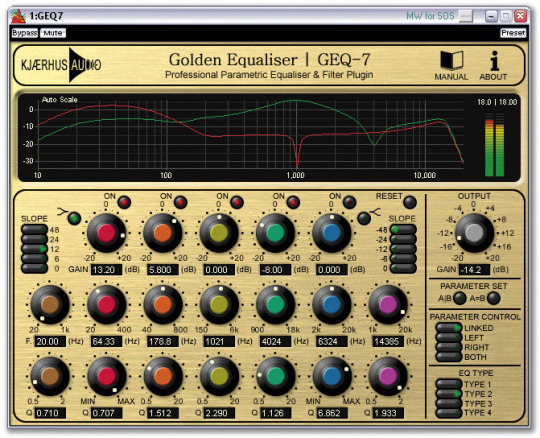
Unity Audio +44 (0)1440 785843.
Kjaerhus For Macbook
+44 (0)1440 785845.
Mac for the blind. OTHER BLIND PRODUCTS Explore the world of MacTo explore our other blind options, like Zebrano, Aptimus, Broadway, Roman, Vertical & Panel, please do not hesitate to contact our corporate office in Delhi or visit our interior blinds section on our website. For the complete list of our channel partners, please visit the contact us section on our website. We promise to offer a blind option for every window type with a selection of more than 2100 fabrics. Our representatives would be happy to visit you and showcase our blinds. We have our wide channel partner network across India.
Kjaerhus For Macbook Pro
Published January 2007

0 notes
Text
XENO & OAKLANDER BRING PSYCHEDELIA TO THE CELESTIAL WITH VIDEO FOR “INSOMNIA”
The song appears on the Hypnos LP, out today from Dais Records. // Catch Xeno & Oaklander on tour this April and May.

"Xeno and Oaklander, New York’s proclaimed 'electro-minimalists' are really quite maximal in terms of musical magnificence." - Flaunt
Electronic duo Xeno & Oaklander are most comfortable in the indecipherable and indescribable. With a curious video for the sultry dance track “Insomnia,” which was directed and edited by vocalist Liz Wendelbo, Xeno & Oaklander tread deeper into the unknown. "Insomnia" is the second single from the twosome’s sixth album Hypnos, out today from Dais Records.
Watch Xeno & Oaklander’s journey into the supernatural realm via Self-Titled Magazine (or directly on YouTube).
“Between waking and dreaming, ‘Insomnia’ explores that very moment when the mind slips into the surreal,” Wendelbo says of the song’s inspiration. “In this sci-fi inspired video, we see Xeno of Xeno & Oaklander roam around the grounds of an abandoned mansion by the sea. Using a dead tree branch as a shamanistic communication device she is summoned into outer space by alien life-forms in the shape of vintage perfume bottles.”
Hypnos, yet another triumph in Xeno & Oaklander’s catalog of melodic minimalism, is as infectious as it is evocative. Blurring the lines between ‘60s French Pop, ‘80s new wave and contemporary modular synth pop, Hypnos unfolds as a dreamlike journey through dense harmonies and complex polyphonic compositions. Anchored by vocalist Liz Wendelbo’s whispy soprano and pictoral lyrics,Hypnos is a feat in both world building and melody making.
Catch Xeno & Oaklander live along the U.S. and Europe this Spring — tour dates are below.
Hypnos — Track Listing:
1. Fire And Smoke
2. Hypnos
3. Angélique
4. Insomnia
5. The Light, The Whisper
6. Altamira
7. A World Without Sun
8. Athena
Xeno & Oaklander — On Tour:
April 1 Boot & Saddle, Philadelphia, PA + *
April 4 Elsewhere Zone One, Brooklyn, NY +
April 5 La Sala Rossa, Montreal, QC ^
April 6 Le Pantoum, Quebec, QC
April 7 The Garrison, Toronto, ON +
April 9 UFO Factory, Detroit, MI +
April 10 Mahall’s, Cleveland, OH +
April 11 The Empty Bottle, Chicago, IL %
April 12 Rozz-Tox, Rock Island, IL +
April 13 Nomad World Pub, Minneapolis, MN
April 15 East Room, Nashville, TN +
April 16 Ace Of Cups, Columbus, OH +
April 24 Charlie’s American Café, Norfolk, VA
April 26 Las Rosas, Miami, FL
April 29 529, Atlanta, GA +
April 30 Santos, New Orleans, LA +
May 2 Regal Room, Dallas, TX +
May 3 Mohawk, Austin, TX +
May 4 Love Buzz, El Paso, TX +
May 8 The Rebel Lounge, Phoenix, AZ +
May 9 Club Congress, Tucson, AZ +
May 11 The Casbah, San Diego, CA
May 12 The Echoplex, Los Angeles, CA
May 16 BE Bruxelles Le Brass *
May 17 DE Lohr Umsont Und Drinnen *
May 18 FR Lille La Malterie *
May 19 UK Bristol The Crofters Rights *
May 21 UK London Moth Club *
May 24 FR Nantes WNWH fest
May 25 FR Paris Petit Bain * ^
May 26 BE Antwerp De Kleine Hedonist
May 29 SE Stockholm Slakthuset *
May 31 DK Copenhagen Stengade *
June 1 DE Berlin Urban Spree *
June 5 HUN Budapest Dürer Kert
June 7 PL Krakow Green ZOO
June 8 CZ Prague Altenburg 1964 *
+ Plastic Ivy
* Void Vision
^ Automelodi
% Odonis Odonis
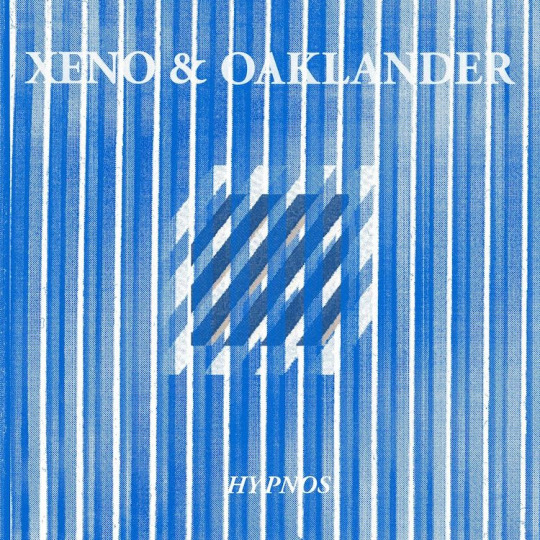

Artist photo by: Albrecht Fuchs
1 note
·
View note
Text
Approaching e-commerce investments in the age of Amazon
With Amazon as the 800-pound gorilla, many of my fellow investors choose to ignore e-commerce altogether. In fact, the industry hit recent lows in a number of deals and investments. But as Bonobos’ $310 million acquisition by Walmart and Stitch Fix’s IPO demonstrate, there are still plenty of exciting opportunities in this space for investors.
In my ongoing hunt for investment opportunities, I recently came across a brand that had garnered significant traction without raising a lot of capital. This traction, however, was across traditional retail channels, not the channel that mattered most to me as a venture investor — e-commerce.
Why do I value this direct to consumer channel so highly? For one, e-commerce margins are better (in the 80 percent range versus as low as 50 percent in traditional retail). But it also offers the potential for scale that retail simply can’t match. My grandfather grew his textiles business methodically, one merchant and store at a time — something I greatly admired as a child, given the grit and hustle he put into closing each sale. However, today, with the help of Facebook ads, viral videos like Dollar Shave Club’s classic ad, influencer and celebrity-driven endorsements, sales can boom overnight.
People have been shopping online for more than two decades, and we have seen a number of iconic brands originate online. Behind many of these brands are successful venture investors, such as Forerunner Ventures (Warby Parker, Glossier, Bonobos) and Maveron (Everlane, Madison Reed), as well as amazing entrepreneurs and marketers like Kal Vepuri, Divya Gugnani and Rohan Oza, who “just get” consumer branding. They know how to make something cool, at an affordable price point, and how to position their companies for big M&A when the time comes.
As these investors and individuals know, billion-dollar acquisitions come from scaling and plugging in e-commerce startups directly to help scale with the acquirer. Jet.com (Walmart), Dollar Shave Club (Unilever), Chewy.com (PetSmart) and Lazada (Alibaba) were acquisitions of talent, revenue, EBITDA, supply chain and strongly branded online brands.
This leads me to approach direct to commerce brand deals through the following three lenses.
Who are you disrupting?
Identifying problems with the incumbents is often the starting point for why a new company needs to exist. It could be an unethical or unhealthy supply chain (something Everlane has exploited well), stodgy brand imagery associating incumbents with older consumers or delivering a similar but cooler product for a cheaper price than the gross-margin laden incumbent (see Dollar Shave versus Gillette).
I also care about CACs — costs of customer acquisition. The general thinking for e-commerce businesses is that with less than 10 percent of U.S. commerce taking place online, you will eventually exhaust all potential customers for your product. Facebook and Instagram ads will only get you so far with a digital audience. Once you need to scale to those shoppers who don’t live their commercial lives online, the common approach is partnerships with traditional brick and mortar retailers.
Let’s use Casper as an example. After famously hitting $1 million in sales within a month and $100 million in its first full year of business, the mattress maker was the undisputed king of the nascent online bedding industry. Spying the masses of potential customers beyond the e-commerce realm, Casper has since partnered first with home furnishings retailer West Elm and then Target — coincidentally, after the Minneapolis retail giant tried to make them one of those billion-dollar acquisitions mentioned above. The approach appears to be paying off: Casper took in around $200 million in revenue last year, and CEO Phillip Krim suggested in the spring that they were on track to double that in 2017.
In the case of Casper, and e-commerce brands in general, customer reviews on Google and Amazon really matter. I never believed I’d buy a mattress online, thinking I’d have to test out a “durable” purchase such as a bed before trying it. My millennial shopping habits kicked in, however, and I realized I didn’t need to roll around on the bed to know it was comfortable because I trusted user reviews.
Casper disrupting the mattress industry
Finally, how you’re disrupting matters. I want to know how you’re using data to improve the e-commerce relationship. Companies such as Constructor.io power search for giant e-commerce companies and demonstrate the power of building a walled garden search box for your products. Analytics drawn from what people are searching for (e.g. products you don’t currently stock, but you should) can provide a lot of tactical insights into new or adjacent product categories that a vendor should stock.
There’s also a lot of insight to be gained from knowing which customers were successfully retargeted and for what products. If you have a retail presence, are you leveraging data that stores are gathering about customers while they’re physically in the store itself? Take RetailNext, which uses strategically placed cameras and computer vision technology to give retailers deep insights into everything that happens from the time a potential customer enters the store to the point of sale.
How much of your supply chain can you collapse by cutting out middlemen and taking your product to customers in as direct a way as possible?
Cut out middlemen like these guys
Digital-first (and sometimes digital-only) brands can benefit from nimble supply chain maneuvering. Larger, brick and mortar business is still largely conducted via salespeople working out of local shops and national distributors that cater to large businesses. E-commerce shoppers are lured away with instant comparison shopping and free delivery, on top of whatever else the digital brand may be offering.
It doesn’t matter if the new digital brands sometimes use the same factories and sourcing as the incumbents they seek to disrupt. The new company is selling a millennial-empathetic lifestyle and the incumbent is something for your parents and “old people.”
When operating as a horizontal e-commerce platform — which can absolutely be branded — think no further than Amazon Marketplace or Boxed Wholesale, one of our investments at Signia. Once customers trust the online marketplace, they will trust own-label products from the platforms themselves. This is typically highly beneficial to the platform due to the higher margins of acting as a vertically integrated supplier versus a third-party product distributor.
How brandable is the product?
Online brandability, especially on Instagram, is a must-have in order to build a successful e-commerce company today. In a previous article, I wrote about the growing importance of influencer marketing and how much brand equity matters in these campaigns: “While influencer marketing takes many different forms, there always has to be a great product, a great story, and great storytelling for the magic to be unlocked. You can’t just attach an influencer to a brand and hope for sales takeoff.”
“Offline” brandability is also an important consideration. When a D2C brand ventures into retail, part of its strategy may include partnering with an incumbent retailer with extensive foot traffic, as Casper did with West Elm and Target. Another part may involve opening retail “brand ambassador” locations. For example, the Mongolian-American luxury cashmere brand, Naadam, recently opened a New York City pop-up containing artifacts from the Mongolian nomadic lifestyle and imagery inspired by the brand’s exotic eastern roots. Glossier recently hosted a pop-up store and dinner in London with a bunch of beauty influencers. These physical IRL (in real life) events and locations can provide real-world brand experiences that further tie consumers to the predominantly digital brands they covet.
Meeting these criteria is not easy, but startups that do attract my attention and my investment dollars. Although other venture investors may beg to differ, e-commerce continues to spawn a wide range of innovative companies that offer compelling investment opportunities.
Featured Image: Pavel Ignatov/Shutterstock
Publicado en TechCrunch http://ift.tt/2A818sV
vía IFTTT
0 notes